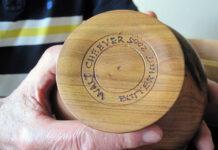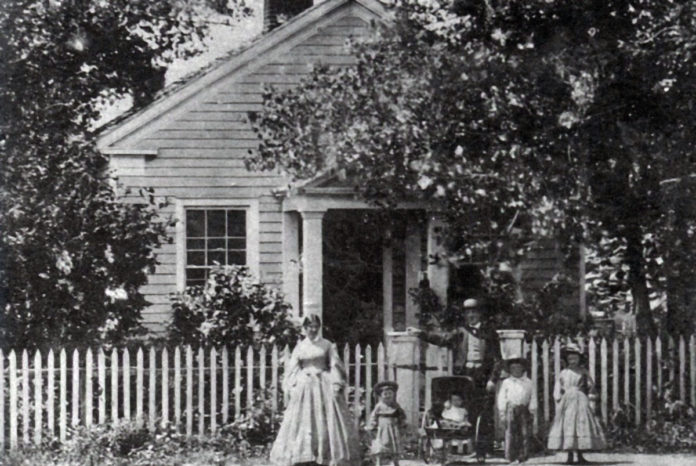
Who were the women who came to settle in the new frontier town of Mankato in the mid-1850’s?
Pioneer life was hard and many of these female pioneers had to deal with the hardship of the journey while pregnant or while caring for young children. Taken away from civilization, they were determined to take civilization with them. The role these women played in making our city what it is now, is a great one and honor is due them for their many acts of bravery and endurance. These are just a few stories of these unsung heroes.
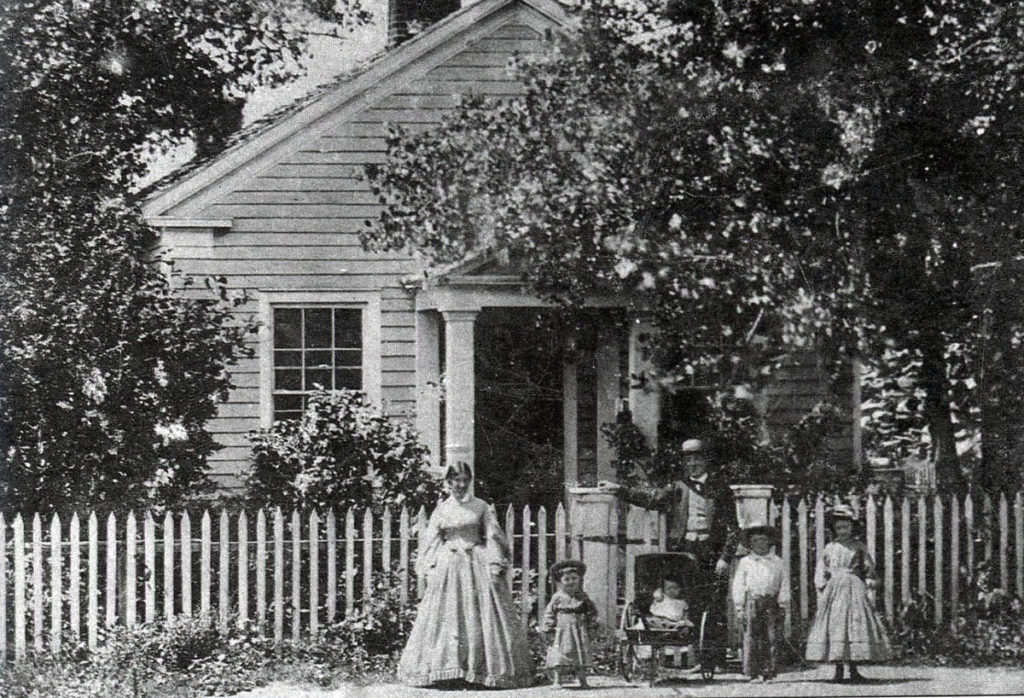
Angeline J Bivens Jackson
Angeline J. Bivens Jackson was one of the earliest white settlers of Minnesota, coming first to St. Paul and later Mankato. She was born April 11, 1817 in Clarence, Erie County, New York and married Henry Jackson at Buffalo, New York in May 1838. Henry was born in Virginia in 1811 and served in the Texas Army under Sam Houston during the Texas Revolution.
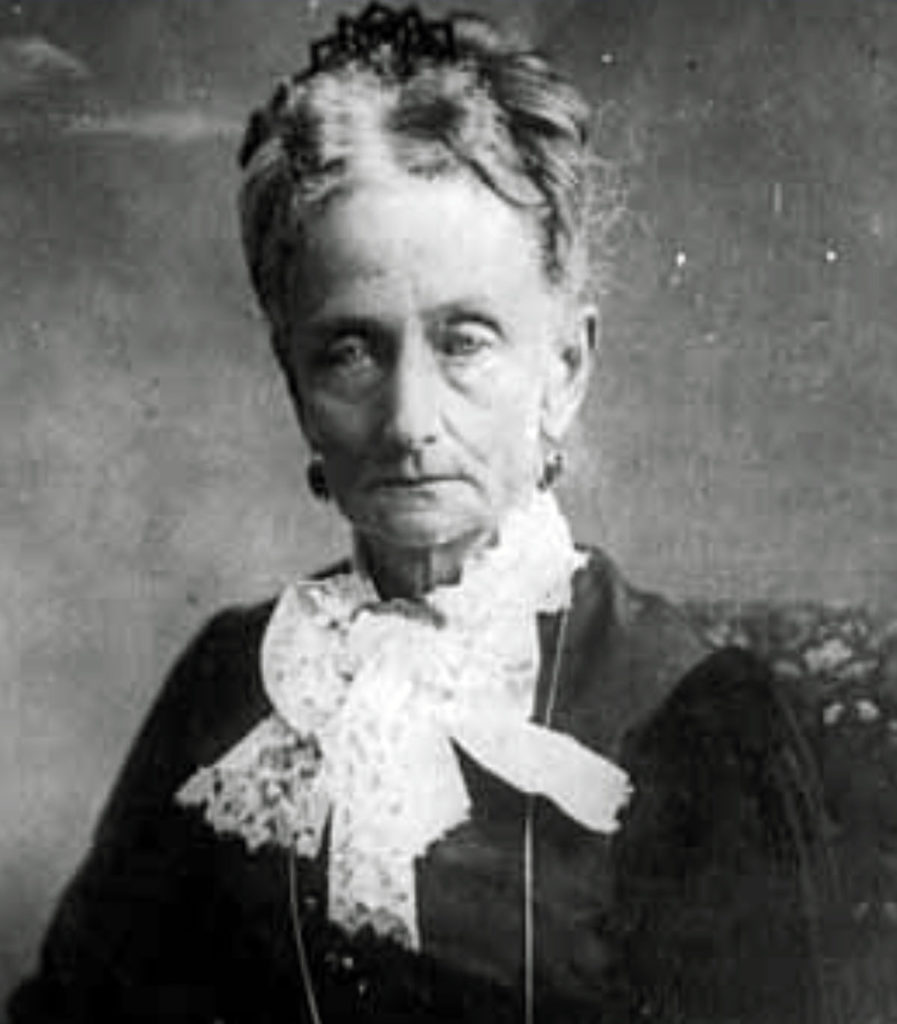
In 1839 the pioneer couple moved west, stopping first in Green Bay, WI and then Galena, IL. After Henry’s business ventures failed in Galena, they moved to St. Paul on June 9, 1842. At this time Minnesota was a territory. Henry built a log cabin here, part of which was used for a store and tavern. Jackson’s store and tavern was at the center for news and trade at the time. He also became very prosperous in the fur business.
Quickly becoming active in political life, Henry was appointed the first Justice of the Peace in 1843, first postmaster of St. Paul in 1846 and in 1849 he represented St. Paul in the Territory of Minnesota’s 1st legislative session. The Jackson’s were well-known and loved and will forever be identified with the early history of Ramsey County.
The Jackson’s only child was a son, William, was born in 1848 in St. Paul. That same year, Angeline’s youngest sister, Laura Bivens (born Sept. 21, 1823 in Erie County, New York), came to visit. It was here she met Parsons King Johnson (known as P.K.), a friend of the Jackson’s.
So impressed with the land and beauty at the bend of the Minnesota River, Jackson and Johnson decided to plat a town-site here.
A tailor by trade, Johnson came to St. Paul from Illinois in 1847 and boarded for a time with Henry and Angeline. He was elected to the 1st Territorial Legislative Session (District 3) in 1849. P.K. and Laura were married in St. Paul on May 8, 1850.
On July 22, 1850, a large group of prominent St. Paul businessmen, including brothers-in-law Jackson and Johnson, boarded the steamboat Yankee on an excursion down the Minnesota River. The excursion took them all the way to present Judson.
So impressed with the land and beauty at the bend of the Minnesota River, Jackson and Johnson decided to plat a town-site here. Back in St. Paul, they organized a town-site company of ten men and by Feb. 1852 the men went to prepare homes for their families in the new town. Johnson opened the first store in the spring of 1852 with a small stock of goods that Jackson had sent from St. Paul. That summer Johnson erected a house of logs and later Jackson built a similar residence in the same block.
Laura Bivens Johnson
Laura’s husband P.K. (born May 8, 1816 in Vermont) was a prominent businessman and active in the organization of Minnesota Territory serving as a member of the first legislature, along with Henry Jackson.
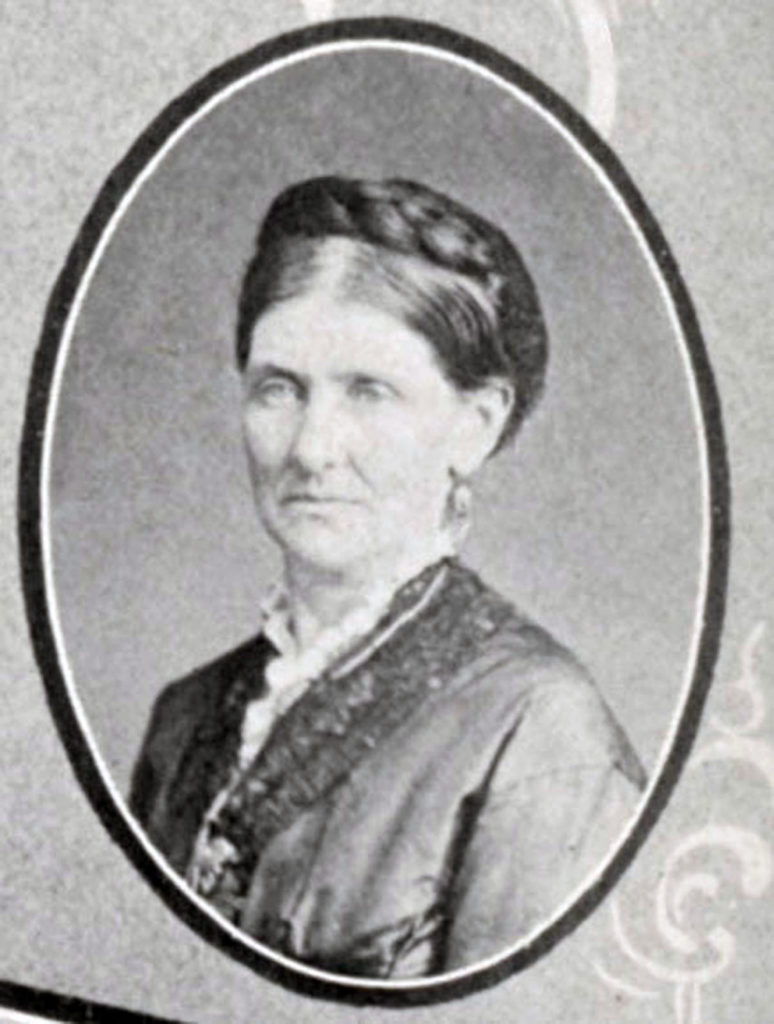
Johnson served under Captain Meagher’s Company in the Home Guards during the US Dakota War in 1862 in Mankato, at the age of 46. He was the first postmaster in Mankato and first Register of Deeds of Blue Earth County and elected and the 7th Territorial Legislative Session representing the 10th District in 1856.
She was a woman well adapted for pioneer life, enjoyed it, for it gave to her ample scope to exercise those kindly, generous, unselfish traits of character which made her life of great benefit to others.
The Johnson’s made their home in Mankato for over 40 years until 1894 when they moved to Brainerd to live with their son, Charles. Laura died Jan. 1, 1894 in Brainerd. Her obituary in the Mankato Free Press describes her: “She was a participant in all the trials and hardships incident to its pioneer days, a living witness of its gradual but certain development. She was a woman well adapted for pioneer life, enjoyed it, for it gave to her ample scope to exercise those kindly, generous, unselfish traits of character which made her life of great benefit to others. She shared the burdens and alleviated the sufferings of the afflicted, and dispensed generous hospitality to all whom kind fate directed this way; and her name is not only endeared to all old settlers, but it will be cherished in the recollections of the descendants of many who have gone before her.”
P.K. was a member of the First Territorial Pioneers Association and enjoyed attending the annual meetings in St. Paul. He passed away Nov. 23, 1907 in Brainerd and is buried beside his wife Laura in Evergreen Cemetery in Brainerd.
Naming the Town
Angeline Jackson and Laura Johnson were given the honor of naming the future city. The women were given a list of names provided by the town-site members. The name “Mankato” was suggested by Col. Daniel Robertson. He had taken the Dakota name “Mankato” meaning Blue Earth river, from French explorer Joseph Nicollet’s book.
The story that claims the spelling of Mankato was originally to be “Mahkato” but was misspelled in transcription is a myth as explained by Dr. William E. Lass in an article written for the Blue Earth County Historian Summer 2015.
The Greek Slave was the first steamboat to arrive in Mankato on April 7, 1853 and among the passengers on board were Angeline and son William Jackson and her sister Laura Johnson. At the time the town-site at the confluence of the Blue Earth and Minnesota Rivers was made up of about a half a dozen log cabins.
The story that claims the spelling of Mankato was originally to be “Mahkato” but was misspelled in transcription is a myth ….
The Jackson’s lived in a log cabin built in the 128-130 area of South Front Street. A few years later, on July 31, 1857, Henry died at the age of 46 and is buried in Glenwood Cemetery. Jackson Streets in St. Paul and Mankato and Jackson County were named for Henry Jackson.
A widow for several years, Angeline married John S. Hinckley in 1864. John was one of the original ten members of the townsite company. A Free Press article written by Frank Franciscus in 1938, describes a Christmas celebration for the Johnson and Hinckley families at the Hinckley home in 1865. “When the noon hour arrived at the Hinckley log cabin on the hills above the present city, the aroma of baked partridges and luscious roast venison was wafted on the air in that humble home. The pine board table fairly groaned under the load of good things to eat.”
In the 1890s Angeline and John Hinckley were living on Division Street. Hinckley’s addition to Mankato includes Hinckley, Marsh and Division Streets.
Angeline died January 1, 1894 and is buried in Glenwood Cemetery. Her obituary describes her: “A pioneer American lady of St. Paul and one of the earliest white women to settle in Mankato. She met with all the rugged experience that belonged to the wives of the pioneers. A lady of excellent character and moved in the highest society, being a leader of society in St. Paul.”
Sarah Jane Hanna Marsh
Sarah Jane Hanna Marsh was born October 15, 1833 near Columbus, Ohio. Sarah and her family were one of the first arrivals in Mankato.
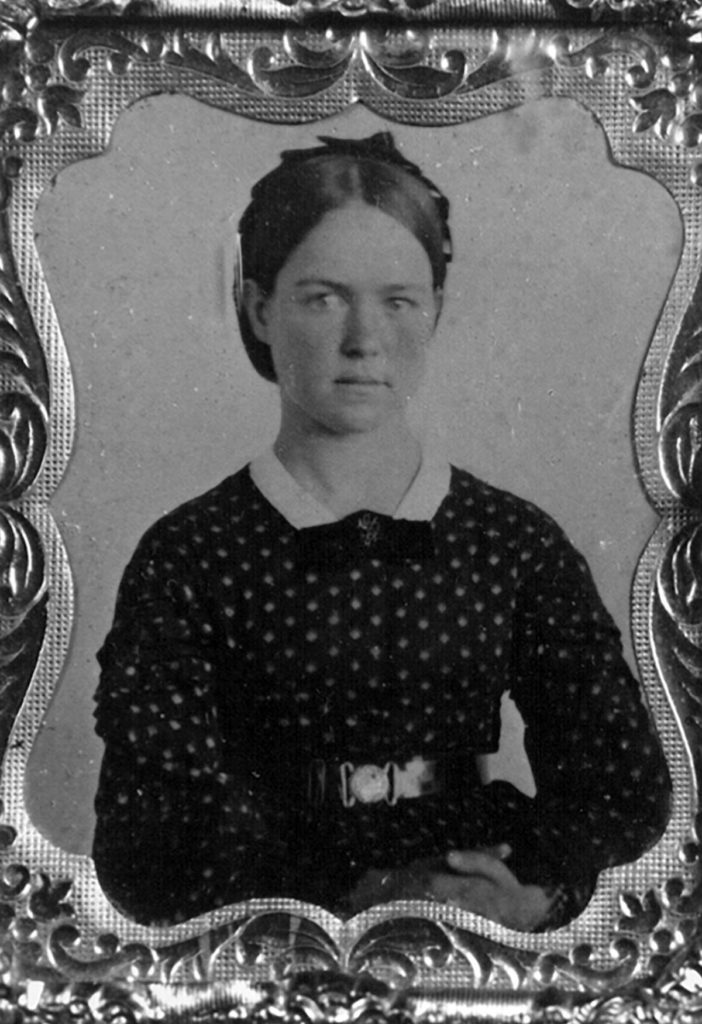
James and Nancy (Boden) Hanna, arrived in Mankato with their families on May 16, 1853. Their daughter, Sarah was 19 years old at the time and one of 14 children. She was raised and educated in the public schools in Ohio.
Sarah’s siblings were Mary Ann, Ellen, John, Andrew, James, Lucinda, Melinda, Margaret, Milton, Nancy, Martha, Mattie and William. Her brother Milton, enlisted in the Civil War and later received the Medal of Honor. Milton’s story can be found in the MankatoLIFE story The Corn Crib Party – Civil War Heroes from Blue Earth County.
Upon their arrival, the Hanna family lived in a crude frame warehouse building while a more permanent home was built and ready to move into by the fall. During the summer of 1853, Sarah taught the first school in a room in the Hanna home with 24 students.
Margaret Rathbun was one of Sarah Hanna’s students and described the school room: “In the middle of the room was a large square iron stove. The pupils sat around the room facing the four walls, the desks being wide boards, projecting out from the walls. The education the children received in those days had to be paid for either by their parents or by someone else who picked out a child and paid for his or her tuition. That was how I received my education. My parents were too poor to pay for mine, and a man in town, who had no children volunteered to pay for some. I went to school for a few years on this man’s subscription.
She soon became a leader in society. She was a bright, intelligent, attractive girl, and was highly popular almost from the day the Hanna family settled here.
Sarah’s cousin, Laura Maxfield (Mrs. John R. Beatty) recalled there were only a few houses in Mankato when they arrived and the only thing they could find to live in was the frame of a warehouse that was being built near the levee. James Hanna purchased the building and “We put a roof on it and moved in. We were a family of twenty-one and I remember the awful stack of dishes we had to wash after each meal. A frame addition was put along side of the building and in July my cousin Sarah J. Hanna started a day school with 24 scholars.”
Sarah Jane Hanna married John Q.A. Marsh on December 29, 1859 in Mankato. John’s brother, George, had come to Mankato in 1853 and established the first general store at the corner of Front and Mulberry Streets. George advised his brother to come to Mankato and in May 1854 John arrived by steamboat bringing merchandise he had purchased in Boston and St. Louis. The Marsh brothers also had the first regular mail route from St. Paul through to Sioux City, IA. John Marsh served as Blue Earth County treasurer in 1855 and served as supervisor, trustee, and clerk of Mankato in its early years.
Sarah and John had two children, Charles and Lizzie. Lizzie died of consumption June 29, 1888. The couple also raised their granddaughter, Marguerite (daughter of their son Charles). John and Sarah lived in a modest home surrounded by a white picket fence on West Front Street (now South Riverfront Drive) on the site of what once was the historic Schmidt House and now the current Y.M.C.A.
Sarah Hanna Marsh died May 18, 1904. Her obituary states she was an “estimable woman of many admirable qualities. She soon became a leader in society. She was a bright, intelligent, attractive girl, and was highly popular almost from the day the Hanna family settled here.”
Mary Warren Pitcher
Mary Warren Pitcher, daughter of Thomas Dustin and Emily Paddock Warren, was one of the earliest residents of Mankato. The Warren family arrived in Mankato aboard the steamship Clarion on June 12, 1853. They located on 120 acres of land that is now in the heart of the city. Thomas Warren operated one of the first stores in Mankato and later sold it to devote his time to his real estate interests. He laid out Warren’s addition in the city, and Warren Street was named for him.
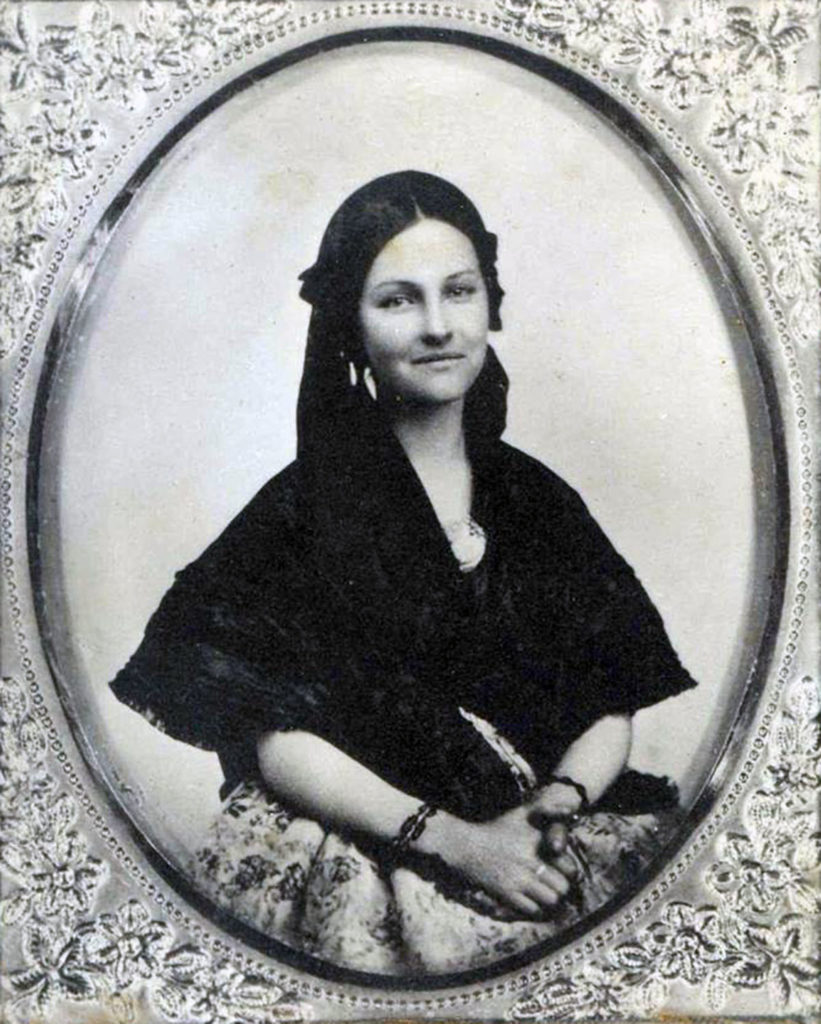
Mary Warren (born September 25, 1840, in McHenry County, Illinois) married Orrin Ormsby Pitcher (1830-1902) in Mankato in 1859. They had three children: Plummer, Grace, and Fannie. Orrin Pitcher was a lawyer and served four years as the Blue Earth county attorney. He served as resident director of the State Normal School and was appointed the first municipal judge of Mankato.
After the death of her husband in 1902, Mary continued to live in their house next to the Post Office on Second Street for 64 years until her death on July 8, 1926. She is buried beside her husband in Glenwood Cemetery.
The following is an account Mary gave for the Old Settlers Association: “Mary Warren Pitcher was a young girl of 13 when my family and I landed in Mankato aboard the steamer Clarion on a lovely day in June 1853. There were only four houses to be seen in Mankato then.
Many women knew how to use a gun too and were prepared to use it if they had to protect their home and children.
“The Clarion was the last boat to come up the river in the fall of 1853. The water was quite low that fall. Captain Humbertson brought a band with him to celebrate the founding of Mankato. The band paraded and played along Front Street. It was quite late in the evening, but everybody turned out, young and old, Captain Humbertson made a short speech, in which he said: “Friends, I can’t come any more this fall, I could hardly get here this time.” When the boat left about midnight, the band played Old Folks at Home. I think every one of us that night experienced a most powerful attack of home-sickness.
“Now when the Civil War began, many changes came to the county. Men were enlisting, leaving their homes and families and going to Fort Snelling in St. Paul. From there they were sent to the South to fight in the Union army. Men and boys who weren’t needed to fight in the Union army were carrying guns at home, defending their homes against the Indians. Many women knew how to use a gun too and were prepared to use it if they had to protect their home and children.
“The Indians were starving and the money the white men promised them was late in coming from Washington. Suddenly in 1862, near Redwood Falls a dreadful attack on the whites broke out. Then the Indians attacked New Ulm, setting fire to the town. Word reached Mankato and the village bell rang out calling people to a meeting. Quickly a militia was organized in Mankato by Captain William Bierbauer. Word spread of many people being killed and we were all terribly frightened.
“Settlers fled from their homes and farmsteads in fear. Some 3,000 people streamed into Mankato looking for safe haven. Our population was only about 1500 people but everyone opened our homes and businesses.
I was present at the hanging of the 38 on December 26, 1862. With the war between the states raging, I wonder if the rest of the country knew what was happening here.
“The next few years were a dark time for us all. Mothers losing their sons, wives their husbands and children their fathers. You can imagine the jubilation when we got word that General Robert E. Lee surrendered to General U.S. Grant on April 9, 1865! But the joy turned to sorrow a week later at the dreadful news that our dear President Abraham Lincoln was assassinated.”
Catherine Brobst
Catherine Brobst was born Jan. 15, 1815 in Pennsylvania. She married Richard Bruce in 1832 and they had two sons, William and Franklin. After a few short years of marriage, Catherine was left a widow.
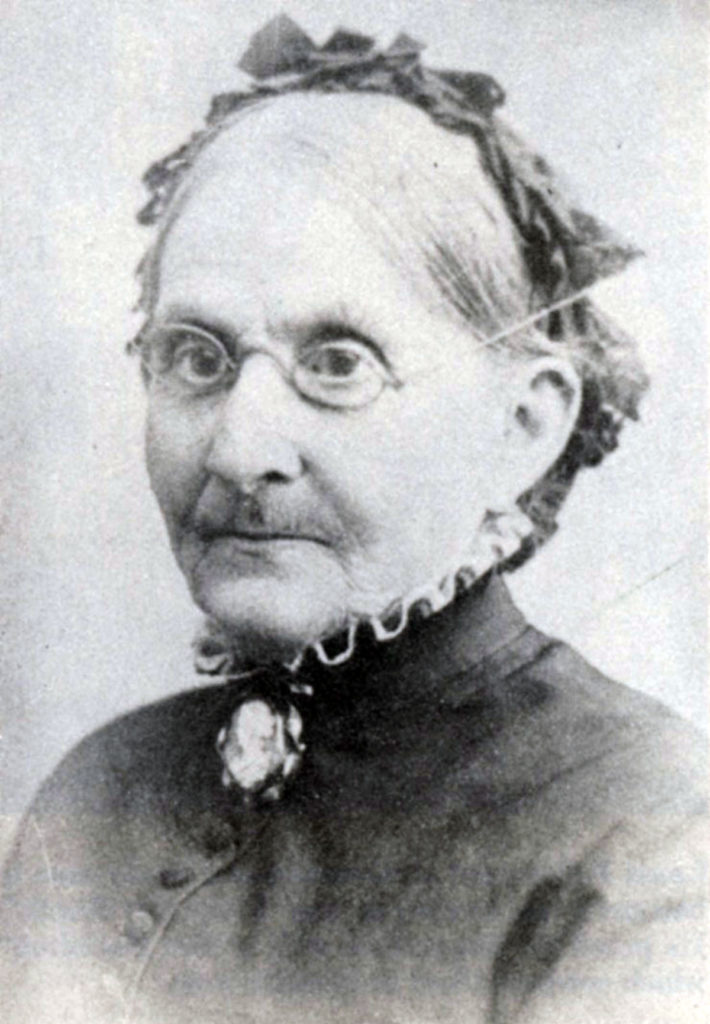
She married Hoxie Rathbun in 1838 and the new family began their pioneer trek west. They spent time in Ohio and Galena, Illinois before coming to St. Paul, MN. In St. Paul, Hoxie found employment on the steamboat Clarion. It was on his first trip aboard the Clarion down the Minnesota River in May 1853, that he decided to build a small shanty and settle with his family in the new townsite called Mankato.
The Rathbun’s, their three daughters, Mary, Margaret and Jane and Catherine’s sons William and Franklin, arrived with their belongings aboard the steamer Clarion from St. Paul in Mankato June 12, 1853.
Their daughter Margaret Rathbun Funk recalled, “We landed about 4 o’clock in the morning, and father took us to a little shack he had built on the brow of the hill west of Front Street near where the place where the old Tourtellotte Hospital used to be. Back of this shack, at a distance of a couple of blocks were twenty Indian teepees, which were known as Wauqaucauthah’s Band. As nearly as I can remember there were nine families here at that time: Maxfield, Hanna, Van Brunt, Warren, Howe, Mills, Jackson and Johnson, our own family being the ninth.”
Catherine Rathbun was noted as an early town nurse and mid-wife who delivered hundreds of babies into the world.
Catherine Rathbun was noted as an early town nurse and mid-wife who delivered hundreds of babies into the world. She was a midwife to the pioneer settlers and to the Indians. There was hardly a pioneer household in Mankato to whose sick she did not minister.
“One time when father was on his way home, he saw an Indian boy who had just been thrown from his horse and took him to his teepee. Later this same Indian remembered my father’s kindness to him by warning us that the Indians were planning an uprising and telling us to leave the county.” – Margaret Rathbun Funk
In the fall of 1856, Hoxie was hired as a messenger by Babcock and Marsh to carry mail by Pony Express between Mankato and Sioux City. Tragedy struck on December 26th that year when Hoxie was caught in a blizzard near Jackson and found frozen to death. After just a few short years in their new home on the frontier, Catherine was left alone to raise their children, that now included a newborn daughter Rebecca.
In 1862, Catherine married Ephriam Cole. Ephriam was another prominent figure in the early history of Mankato. He arrived in 1852, was a carpenter by trade and helped to build Mankato’s first hotel, named the Mankato House. Catherine died May 4, 1909 and is buried in Glenwood Cemetery.


